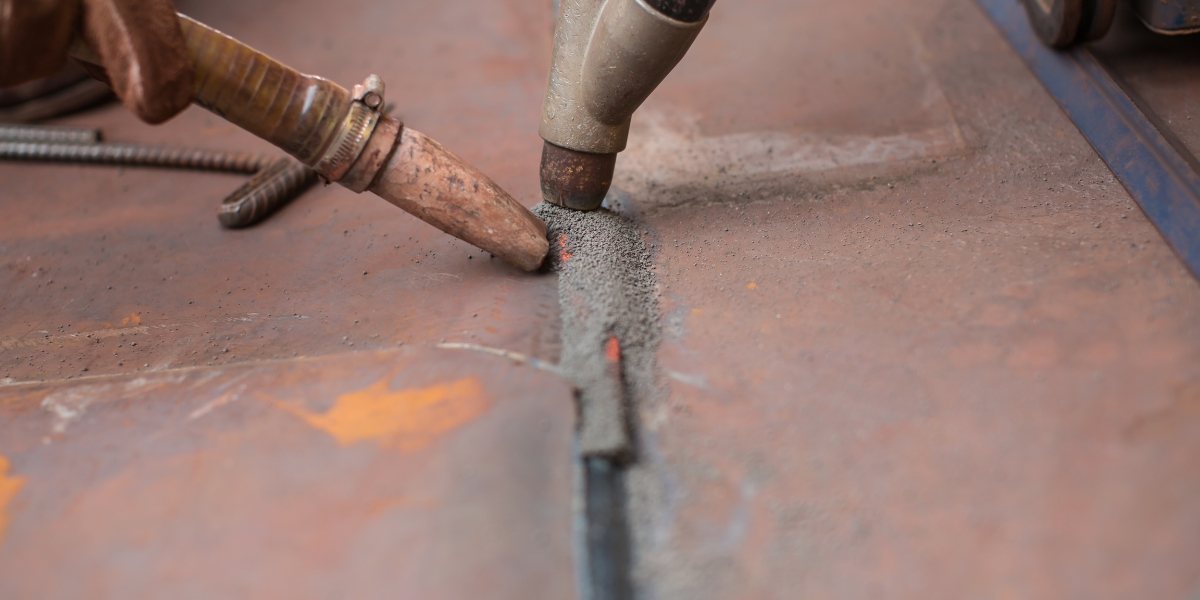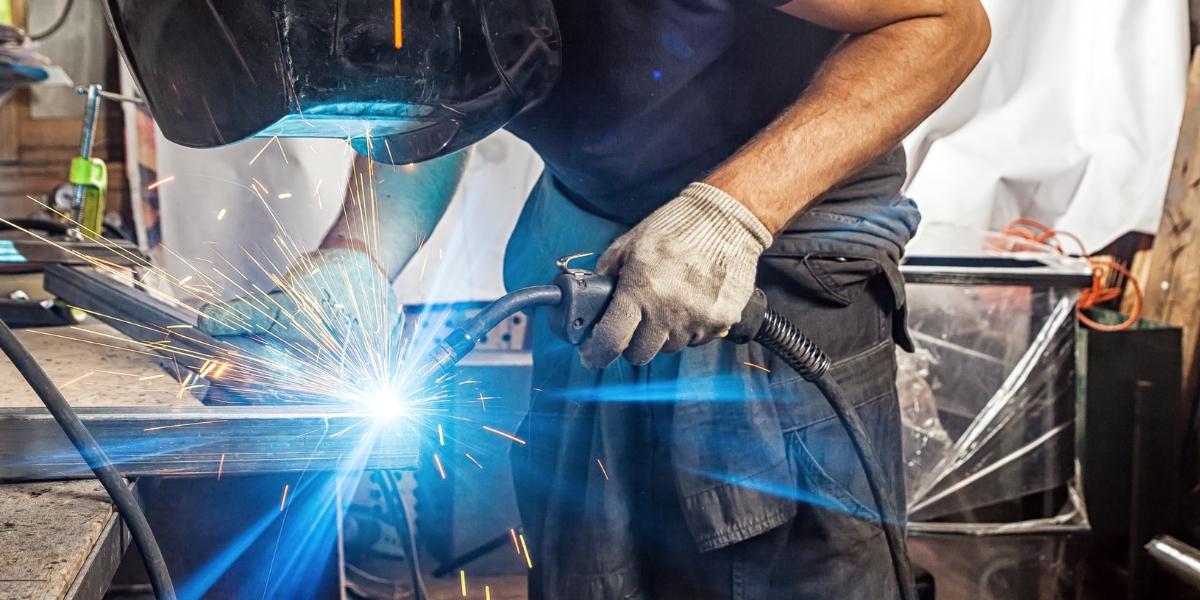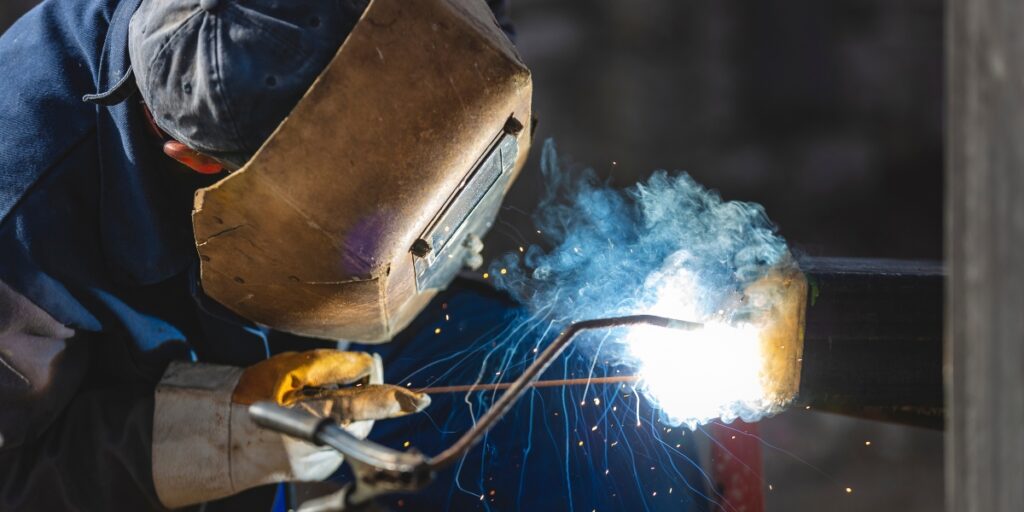If you’re looking to delve into the world of welding, understanding the differences between SAW (submerged arc welding) and MIG (metal inert gas) welding is essential.
In this article, we’ll explore the advantages and disadvantages of both methods, as well as their respective applications.
With a focus on technical precision, we’ll provide you with the knowledge you need to choose the right welding method for your specific needs.
So, let’s dive in and unravel the complexities of SAW welding versus MIG welding.
Key Takeaways
– SAW welding is commonly used for heavy-duty applications and is ideal for shipbuilding and pipeline construction.
– MIG welding is suitable for automotive repairs, fabrication, and general metalwork, providing flexibility with various techniques and processes.
– SAW welding offers high deposition rates and deep penetration capabilities, while MIG welding offers good control and is ideal for thin materials.
– When choosing the right welding method, factors to consider include material thickness, joint design, desired weld quality and appearance, and overall productivity needs.

Advantages and Disadvantages of SAW Welding
You’ll find that one advantage of SAW welding is its ability to produce high-quality welds.
SAW welding techniques involve the use of a submerged arc welding machine, which consists of a power source, a control panel, and a wire feeder.
The power source generates the electrical current required for welding, while the control panel allows you to adjust the voltage and wire speed settings.
The wire feeder, on the other hand, supplies the continuous wire electrode to the welding zone.
This combination of equipment ensures precise and controlled welding parameters, resulting in strong and durable welds.
Additionally, SAW welding techniques offer high deposition rates, meaning you can complete projects quickly and efficiently.
Overall, SAW welding is a reliable and efficient method for producing high-quality welds.
Advantages and Disadvantages of MIG Welding
There are several advantages and disadvantages of MIG welding that you should consider.
Pros of MIG welding
– Faster welding process, increasing productivity and efficiency.
– Ability to weld a wide range of materials, including stainless steel and aluminum.
– Less cleaning and preparation required before welding.
– High deposition rates, resulting in stronger welds.
– Easy to learn and use, making it suitable for beginners.
Cons of MIG welding
– Not suitable for outdoor or windy conditions due to its reliance on shielding gas.
– Limited penetration, making it less suitable for thick materials.
– Higher cost due to the need for shielding gas and wire consumables.
– Prone to producing spatter, which requires additional cleaning and finishing.
– Requires a constant power supply, making it less portable.
When comparing MIG welding to TIG welding, MIG welding offers faster welding speeds and easier operation, while TIG welding provides greater control and precision. Ultimately, the choice between the two depends on the specific requirements of the project.
Applications of SAW Welding
If you’re looking for a welding process that’s commonly used for heavy-duty applications, such as shipbuilding and pipeline construction, SAW welding might be the right choice for you.
SAW stands for Submerged Arc Welding, which is an efficient and reliable welding technique used in various industries. The SAW welding process involves creating an arc between a continuously fed electrode and the workpiece, while a granular flux is used to shield the arc and prevent oxidation.
This technique allows for high deposition rates and deep penetration, making it ideal for thick materials and long, continuous welds. SAW welding is commonly used in industries such as construction, oil and gas, and automotive manufacturing.
Its benefits include high productivity, excellent weld quality, and minimal operator involvement. So, if you’re working on heavy-duty applications, consider exploring the versatile and efficient SAW welding techniques.

Applications of MIG Welding
You can use MIG welding for a wide range of applications, including automotive repairs, fabrication, and general metalwork.
MIG, which stands for Metal Inert Gas, is a welding process that uses a wire electrode to create an electric arc between the workpiece and the electrode. This arc creates heat, melting the base metal and the wire electrode, which then fuse together to form a weld.
MIG welding offers several techniques and processes that cater to specific needs. Some of these techniques include short-circuiting transfer, globular transfer, spray transfer, and pulsed spray transfer. Each technique has its advantages and is suitable for different applications.
The MIG welding process also offers variations such as gas metal arc welding (GMAW) and flux-cored arc welding (FCAW). These variations provide additional flexibility and adaptability to different welding situations.
Choosing the Right Welding Method: Factors to Consider
When considering the right welding method, it’s important to weigh factors such as the type of material, joint design, and desired weld quality.
One popular welding method to consider is Saw Welding, which stands for Submerged Arc Welding. Saw Welding is commonly used for heavy-duty applications and is known for its high deposition rates and deep penetration capabilities. It involves the use of a continuous wire electrode that’s fed through a welding gun. The arc is shielded by a layer of granular flux, which provides protection from atmospheric contamination.
On the other hand, Mig Welding, or Metal Inert Gas Welding, is another option to consider. Mig Welding utilizes a continuously fed wire electrode and a shielding gas to protect the weld pool. It’s ideal for thin materials and provides good control over the weld bead.
When comparing Saw Welding and Mig Welding, factors to consider include the material thickness, joint design, desired weld appearance, and overall productivity.
Frequently Asked Questions
What Is the Difference Between Saw Welding and Mig Welding?
When deciding between saw welding and mig welding, consider the pros and cons. Saw welding offers deeper penetration and higher deposition rates, while mig welding provides versatility and ease of use. Make an informed choice based on your specific needs.
Which Welding Method Is More Suitable for Welding Thick Materials?
For welding thick materials, consider the advantages of saw welding. It offers high deposition rates and deep penetration, making it suitable for heavy-duty applications. However, the method’s limitations should be taken into account to ensure the strength and durability of the welds.
Can Saw Welding Be Used for Outdoor Applications?
Yes, saw welding can be used for outdoor applications. It offers advantages such as deep penetration, high deposition rates, and excellent weld quality. When compared to arc welding techniques, saw welding is more efficient and provides better control over the welding process.
Does Mig Welding Produce More Heat Than Saw Welding?
MIG welding produces more heat than SAW welding. It is important to consider this when choosing between the two methods. Additionally, when comparing MIG welding to TIG welding, the advantages of SAW welding become apparent.
Are There Any Safety Precautions Specific to Mig Welding That Should Be Considered?
When it comes to safety measures in MIG welding, there are several precautions you should consider. Make sure to wear appropriate personal protective equipment, such as gloves, goggles, and a welding helmet. Additionally, ensure that your work area is well-ventilated to prevent the inhalation of harmful fumes.
Conclusion
In conclusion, both SAW welding and MIG welding have their own advantages and disadvantages.
SAW welding offers deep penetration and high deposition rates, making it suitable for heavy, thick materials.
On the other hand, MIG welding provides versatility and ease of use, making it ideal for thin materials and general fabrication.
The choice between these methods depends on factors such as material thickness, welding speed, and desired outcome.
It’s crucial to carefully consider these factors to ensure the right welding method is chosen for each specific application.

